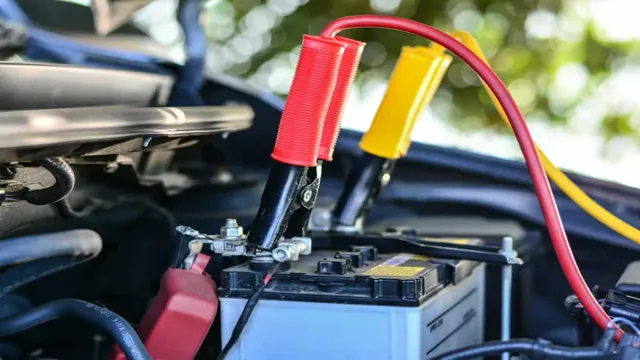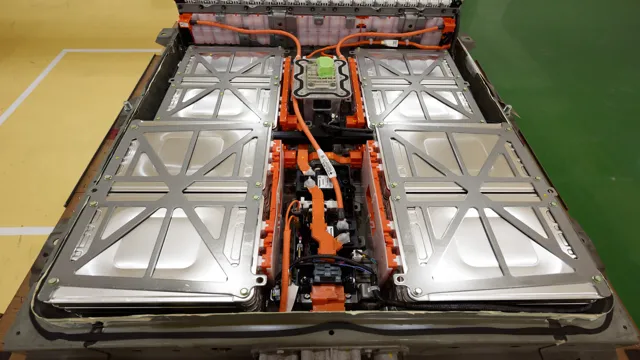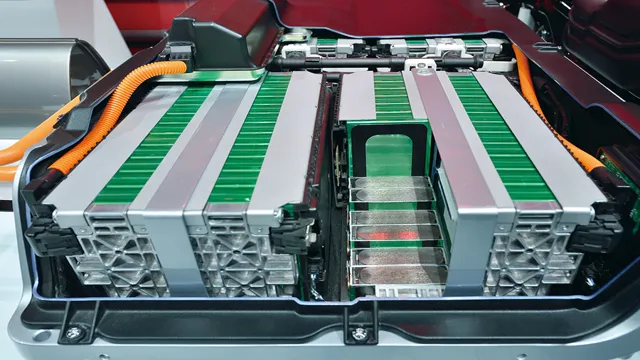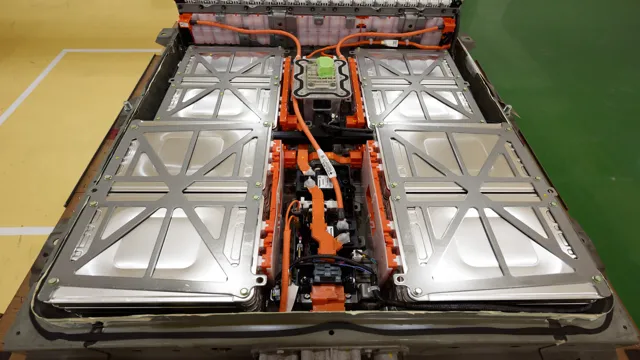Revolutionary Technology: Electric Cars Now Charge Their Batteries on the Go
Electric cars have been gaining popularity in recent years, and for good reason. They are eco-friendly, energy-efficient, and offer a smooth driving experience. With the rise of electric vehicles, the need for efficient and accessible charging solutions has become increasingly important.
While fast charging stations are becoming more common, drivers are still facing the issue of range anxiety – the fear of their car battery running out of charge in the middle of a trip. However, what if we told you that electric car battery charging while driving could soon be a reality? This exciting prospect of being able to charge an electric car battery while driving has been a topic of discussion in the automotive industry for some time now. Currently, most electric vehicles rely on external charging stations or home charging points to recharge their batteries.
This process can take anywhere from 30 minutes up to a couple of hours, depending on the type of charging station and the size of the battery. However, researchers and engineers are now exploring the possibility of integrating wireless charging technology into roads and infrastructure. This would allow electric vehicles to charge their batteries while driving on the road, without the need for external charging stations.
Imagine being able to drive for long distances without the fear of running out of charge and without the need to make pit stops at charging stations. While this technology is still in the experimental stage, the potential benefits of electric car battery charging while driving are enormous. Not only would it eliminate range anxiety for electric car owners, but it could also encourage more people to switch to electric vehicles, leading to a cleaner and more sustainable future for our planet.
How Electric Cars Charge Batteries
When it comes to charging an electric car’s battery, there are a couple of ways to go about it. One of the most popular methods is regenerative braking. This technology converts some of the kinetic energy from the car’s motion into electricity, which is then stored in the battery.
Another way electric cars can charge their batteries is through inductive charging. This method involves placing a charger pad on the ground, which will then transmit electricity wirelessly to the car’s battery. Additionally, some electric cars have the ability to charge their batteries while plugged into a power source, such as a charging station or a wall outlet.
Overall, there are a few ways that an electric car can charge its battery, and it’s important for electric car drivers to understand which method is best for their specific car model and driving habits.
Regenerative Braking Technology
Regenerative Braking Technology One of the most significant advantages of electric cars is their ability to use regenerative braking technology. This innovative technology allows the car to recover energy that would otherwise be lost during braking and use it to recharge the battery. When the driver applies the brakes, the vehicle’s electric motor applies a reverse force, slowing down the car and converting the kinetic energy into electrical energy.
This process is called regenerative braking, and it’s one of the primary ways electric cars recharge their batteries. The amount of energy recovered depends on various factors, such as the speed of the car, the force applied to the brakes, and the battery’s state of charge. Regenerative braking technology is an excellent way for electric cars to increase their range and improve their overall efficiency.
With regenerative braking, electric cars can recharge their batteries while driving, making it more convenient for drivers to travel longer distances without stopping to recharge.
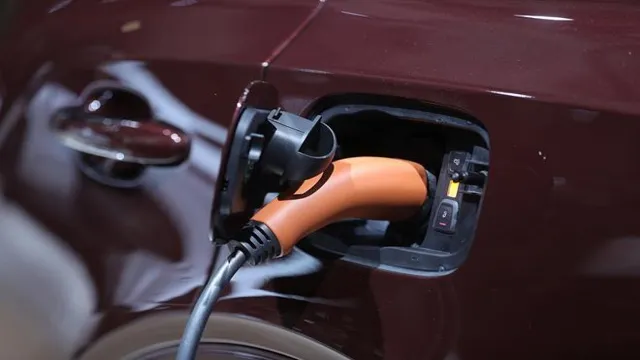
Onboard Chargers
Electric cars are becoming increasingly popular, and to keep them powered up, it’s essential to understand how they charge their batteries. Onboard chargers are a crucial component of electric vehicles that allow them to recharge their batteries via a charging station or an electrical outlet. These chargers convert the AC power from the grid into DC power, which is used to recharge the battery.
The charging speed of onboard chargers depends on the input voltage and the maximum capacity of the battery. Some electric vehicles are also equipped with fast chargers that can quickly recharge the battery within minutes. Overall, onboard chargers are a vital aspect of electric vehicles and ensure that they are always ready to hit the road.
Benefits of Charging while Driving
Did you know that some electric cars can actually charge their batteries while driving? It’s called regenerative braking, and it’s one of the key benefits of owning an electric car. When you apply the brakes, the electric motor in your car’s drivetrain actually goes into reverse, generating electricity and sending it back to the battery. This means that every time you slow down or stop, you’re actually adding a little bit of charge back into your car’s battery.
Over time, this can really add up, allowing you to drive further on a single charge and making your electric car even more efficient. Not only does this save you money on your electricity bill, but it also means you’re doing your part to reduce your carbon footprint and help the environment. So if you’re in the market for a new car and you’re looking to make a difference, consider an electric car that can charge its battery while driving!
Increased Range
One of the biggest advantages of charging your electric vehicle while driving is that it significantly increases your range. By charging your vehicle while on the move, you’re effectively adding miles to your trip without the need for a lengthy pit stop to charge up. This means you’ll be able to travel further and without worrying about running out of juice, making long-distance journeys much more practical.
Plus, with many public charging stations now offering fast-charging capabilities, you won’t have to compromise on the speed of your trip either. So if you’re in a rush or just looking to maximize your time on the road, charging while driving is definitely worth considering.
Reduced Charging Time
Reduced Charging Time One of the biggest benefits of charging while driving is the significant reduction in charging time. With traditional charging methods, EV owners have to wait for hours to get a full battery charge. But with on-the-go charging, the charging process can be expedited, reducing the time it takes to recharge an EV.
This is particularly useful for drivers who are on long road trips and don’t want to lose hours of their time sitting and waiting for their vehicle to recharge. With reduced charging time, drivers can stay on the move and explore new places without worrying about running out of battery power. Overall, charging while driving is a game-changer for EV technology, making it more convenient and practical for drivers who are constantly on the go.
More Environmentally Friendly
When it comes to electric vehicles, one of the key benefits is their ability to charge while driving. This not only saves time but also allows for a more environmentally friendly way of driving. By using regenerative braking technology, electric vehicles are able to convert the kinetic energy produced while braking into electrical energy that can be used to charge the battery.
This means that instead of wasting energy as heat, it can be harnessed to power the vehicle. Additionally, charging while driving can reduce demand on the power grid during peak hours, making it more efficient and sustainable. So not only does charging while driving save time and money, but it also helps to reduce our carbon footprint and take steps towards a more sustainable future.
Electric Car Models that Charge while Driving
When it comes to electric cars, the ability to charge while driving is a game-changer. While not every electric car has this capability, there are several models that do. One such model is the Tesla Model S.
Its regenerative braking system uses the energy that’s normally lost during braking to charge the battery. Another electric car that can charge while driving is the BMW i This car has a range extender option that comes with a small gasoline engine that charges the battery while driving.
Finally, the Chevy Volt is another electric car that can charge while driving. Its battery can be charged while driving through a process called regenerative braking. This means that the car’s kinetic energy is converted into electrical energy and stored in the battery.
All in all, being able to charge an electric car while driving adds a layer of convenience and functionality that makes it even more appealing to eco-conscious drivers.
Tesla Model S and Model X
The Tesla Model S and Model X are two electric car models that have revolutionized the automotive industry. What makes them stand out is their ability to charge while driving. This is thanks to a technology called regenerative braking, which converts the kinetic energy produced during braking into electrical energy that is then stored in the car’s battery.
This means that when you brake, the car’s battery is recharged, giving you more range without having to stop and charge. It’s like having a charging station on wheels. The Tesla Model S and Model X are not only environmentally friendly but also practical, making them a popular choice among eco-conscious consumers.
So if you’re looking for an electric car that charges while driving, the Tesla Model S and Model X are definitely worth considering.
BMW i3
If you’re interested in electric car models that can charge while driving, the BMW i3 is one to consider. The i3 features a built-in Range Extender that generates electricity while you drive, allowing you to go even farther on a single charge. This innovative feature means that the i3 can charge on the go, making it a practical choice for those who like to take long drives without worrying about running out of power.
Additionally, the i3 is eco-friendly, with a carbon fiber body and sustainable interior materials. It’s also a joy to drive, with responsive handling and a smooth ride. If you’re in the market for a car that’s both practical and stylish, the BMW i3 is definitely worth considering.
Future of Charging while Driving
Electric cars have become increasingly popular over the years due to their environmental benefits and growing concern for climate change. One of the major issues with electric cars is the need for frequent charging, which can be inconvenient when there are limited charging stations available. However, the future of charging while driving is already being developed.
Researchers are working on technology that will enable an electric car to charge its battery while driving, known as dynamic wireless charging. This technology involves having charging coils installed in the road, which will create a magnetic field that transfers energy wirelessly to the car’s receiver coil. This will keep the car’s battery charged while driving, reducing the need for frequent stops at charging stations.
Dynamic wireless charging is still in its early stages, but it has the potential to revolutionize the electric car industry, making electric cars more convenient and accessible to all.
Conclusion
As the future of transportation continues to evolve, the idea of electric cars charging their batteries while driving is both innovative and exciting. It takes the efficiency of electric vehicles to a whole new level and could even lead to longer driving ranges and reduced charging times. It’s like having your cake and eating it too – except in this case, you can drive your car and charge it at the same time.
So sit back, relax, and let the electric vehicle do the work while you enjoy the ride (and maybe even catch up on some much-needed rest). After all, with a car that can charge itself while driving, who needs gas stations?”
FAQs
How do electric cars charge their batteries while driving?
Electric cars use regenerative braking to charge their batteries while driving. When the driver applies the brakes, the electric motor helps to slow down the car, and it also acts as a generator, converting some of the kinetic energy into electrical energy. This energy is stored in the battery for later use.
How efficient is regenerative braking in charging electric car batteries?
Regenerative braking is a highly efficient way of charging electric car batteries. It can recover up to 70% of the energy that would have been lost as heat during normal braking. This energy is then stored in the battery, reducing the need for external charging and extending the car’s range.
Do electric cars need to be connected to a charging station while driving?
No, electric cars do not need to be connected to a charging station while driving. They can charge their batteries while driving using regenerative braking. However, they do need to be charged externally when the battery runs out, and this is usually done at a charging station.
How long does it take to fully charge an electric car battery while driving?
The time it takes to fully charge an electric car battery while driving depends on various factors, such as the car’s speed, driving conditions, and the battery’s capacity. In general, it takes longer to charge the battery while driving than it does with external charging, but it can still provide a significant amount of charge over a longer period of time.
